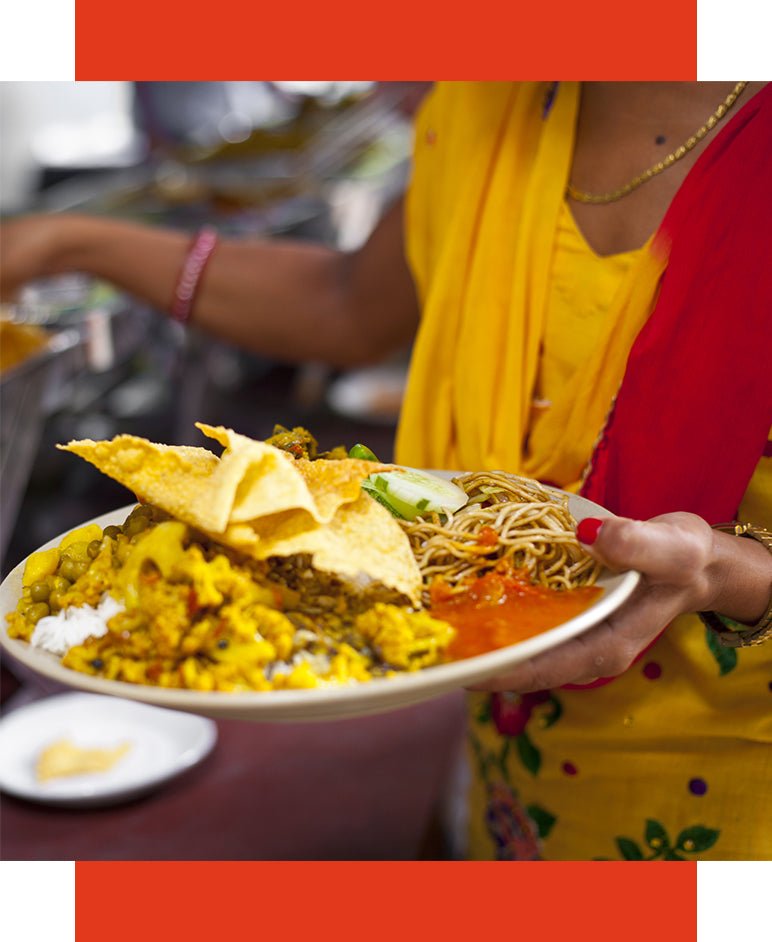Indian cuisine? It seems like we know it. But do we? I spent many hours with my Indian friends talking about the dishes typical of their region. I spent a lot of time in India exploring and learning about Indian cuisine. India is a diverse country - each region has its own language, culture and cuisine! Different culinary regions combine plants used in the kitchen such as chili pepper, mustard, cumin, turmeric, fenugreek, ginger, garlic, cardamom, cloves, coriander, cinnamon, nutmeg, saffron, rose petals, curry powder and asafoetida (a strong-smelling spice). These ingredients are used in different combinations in different regions. Most of them are also ingredients of Orientana cosmetics
Indian cuisine is divided into 4 regions
North Indian cuisine is probably the most widespread culinary style outside India. It reflects a strong Mughal influence and is characterised by the significant use of dairy products: milk, paneer (an Indian mild cheese), ghee (clarified butter) and yoghurt are all used regularly in the region's dishes. Samosas, fried dumplings stuffed with potatoes, are a characteristic northern snack. Also popular here are dishes from the clay oven, tandori, roasted meat or naan bread, which have a characteristic charcoal aroma.
The cuisine of the West Indies is made up of three main regions: Maharashtra, Gujarat and Goa. Due to its location, fish and coconut milk dominate the cuisine of Maharashtra, while Gujarat cuisine is mainly vegetarian, and many dishes have a sweet flavor due to the influence of Chinese dishes. The region is well known for a dish called chutney. These are slightly spicy preserves made from fresh or pickled vegetables and fruits. They have a sweet, sour or quite hot flavor. Goa was once a Portuguese colony, but today it has a unique blend of Indian and Portuguese culinary elements. Due to its coastal location, fish is popular here.
East Indian cuisine is the realm of desserts. Desserts from this region are often found in Indian restaurants outside India because of their wonderful taste. Rasgulla is very popular - a sweet delicacy made of porridge and cheese (chenna), cooked in a light sugar syrup. Mustard seeds, poppy seeds and mustard oil dominate in Eastern cuisine, giving dishes a slight spiciness. Rice and fish also play an important role here.
South Indian cuisine is not usually found on Indian restaurant menus and is very different from other regions. Here, curry sauce has a different consistency – more solid than liquid. Sambar, rasam and kootus are three popular stew-like dishes, differing in their basic ingredients and degrees of liquidity. Sambar is a stew of peas and vegetables with a tamarind flavour. Rasam is more like a soup and consists mainly of tomatoes, tamarind and lots of spices. South Indian cuisine is famous for its delicious fried or steamed snacks. This is where Dosa comes from, which I love and which I have already written about on the blog. Utthapams are also popular here – similar to pancakes, but thicker and filled or topped with vegetables. In this region, we can eat very healthy idlis – steamed, as well as vadas, similar to doughnuts with a hole.
I hope you are hungry now






